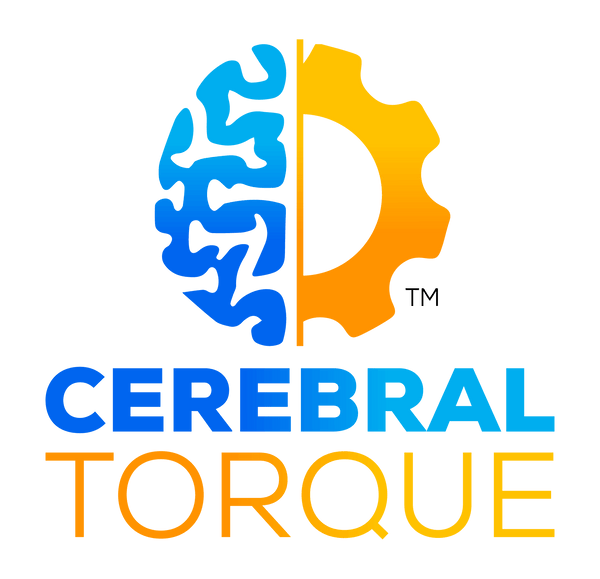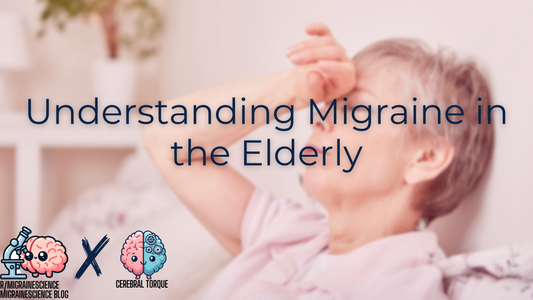
What Do the Guidelines Say About Hormonal Contraception and Migraine with Aura?
Cerebral TorqueShare
This post is for educational purposes only and may contain errors. Please talk to your neurologist.
There is no consensus among the World Health Organization (WHO), The American College of Obstetricians & Gynecologists (ACOG), and the International Headache Society (IHS) in regards to the use of combined hormonal contraception (CHC) on patients with migraine with aura.
Therefore, migraineurs will be given different recommendations depending on the specialty of the physician (primary care is more likely to follow WHO, OB/GYNs follow ACOG, and neurologists follow IHS), experience, and personal understanding of the data.
The concern is the risk of stroke among migraine with aura patients as there is a small, but quantifiable increase in stroke. Combined hormonal contraception also carries a small stroke risk, which may further increase the risk in migraine with aura patients.
Our job here will not be to claim one organization is more accurate than the other, but to make you aware of what the recommendations are and how they differ.
Before we get to the recommendations, there are a few points that should be highlighted.
- Migraine is a disease that is very common during the ages that most women would use hormonal contraception and hence why this is an incredibly important area of discussion.
- There are different types of aura. Visual is the most well-known and recognized, but sensory and language aura are also auras and, therefore, carry the same risk.
- Combined hormonal contraception (CHC) is not only used for contraception, but is prescribed for medical conditions, such as, acne, polycystic ovarian syndrome (PCOS), endometriosis, etc. Many migraineurs with aura may also suffer from these conditions underlying the importance of the available guidelines.
- I just used the term CHC. What does this mean? It means that it is a combination of ethinyl estradiol and progestin. There are also progestin-only forms of hormonal contraception commonly referred to as the “mini pill.”
- Data is limited, but progestin-only forms of contraception do not seem to be associated with an increased risk of ischemic stroke.
- CHC should not be used as first-line migraine preventives. However, for those that need it for other conditions, they may find it beneficial for migraine prevention- especially those that suffer from menstrual migraine.
- Many of the studies done on CHC stroke risk were done with higher doses and are not comparable to the low dosages used today.
- The method of contraception may increase or decrease the risk of cardiovascular events. For example, oral vs patch, respectively.
What does the World Health Organization (WHO) say?
The WHO (and ACOG) categorizes contraceptive use into 4 categories and designates a category to each condition.
The 4 categories are:

What does this mean in terms of clinical judgement?

In terms of migraine with aura for all ages, the WHO has categorized the use of ALL combined hormonal contraception (CHC) a 4. This means combined oral contraception (COC), combined contraceptive patch (P), combined contraceptive vaginal ring (CVR), and combined injectable contraceptive (CIC) are not to be used in this group according to WHO guidelines. This also means that they must be discontinued if migraine with aura were to develop.
Of note, the WHO also categorizes the continuation of CHC for women 35 years old and older with migraine without aura a 4. (Initiation of treatment for this group is categorized as a 3. This group did not develop migraine while on CHC or else they would be categorized as a 4; hence continuation vs initiation).
For the progestin-only pill, levonorgestrel and etonogestrel (implants), depot medroxyprogesterone acetate (injectable), and norethisterone enanthate (injectable) the initiation of these medications is categorized as a 2 for all ages of migraine with aura and continuation is a 3.
The aforementioned classifications are for women without any other risk factor for stroke.
Initiation and continuation of the copper IUD is categorized as a 1 for migraine with aura for all ages and levonorgestrel-releasing IUD (20 µg/24 hours) initiation is classified as a 2 while the continuation is classified as a 3.
What does the American College of Obstetricians and Gynecologists (ACOG) say?
Like the World Health Organization, ACOG also has the same exact 4 categories collectively called the U.S. Medical Eligibility Criteria for Contraceptive Use or USMEC.

ACOG classifies all progestin-only methods in women with migraine with aura (and without aura) a 1 and all estrogen-containing contraceptives for women with migraine with aura a 4. For comparison, those with migraine WITHOUT aura AND no other risk factors for stroke are classified as a 2.
What does the International Headache Society (IHS) say?
The recommendations from the IHS on low-dose formulations of combined oral contraception (COC) are more relaxed, but they emphasize that it does “not replace general guidelines for the safe use of COCs and national recommendations that relate to migraine and COCs, where they exist.”
They acknowledge that migraine with aura is a risk factor for ischemic stroke in women with migraine using COC. However, they do not label it as an absolute contraindication (although it still may be) as WHO and ACOG do, but they instead recognize that everyone is unique and must be assessed and risk factors (see Box 1 for risk factors) evaluated on a case-by-case basis.
The guidelines also state that there are no contraindications for the use of COCs in women with migraine without aura and other risk factors.
Because health and behaviors are dynamic, counseling women to report any new onset aura symptoms, worsening of auras, or changes in their cardiovascular risk is crucial. Risk factors should be identified, and treated when possible- such as with hypertension and hyperlipidemia- and smoking should be stopped prior to starting COCs.
The IHS lists 4 migraine-related symptoms that require further evaluation and/or cessation of COCs:
- New persisting headache.
- New onset of migraine aura.
- Increased headache frequency or intensity.
- Development of unusual aura symptoms, particularly prolonged aura.

Sources:
WHO
https://www.who.int/publications/i/item/9789241549158
ACOG
IHS

